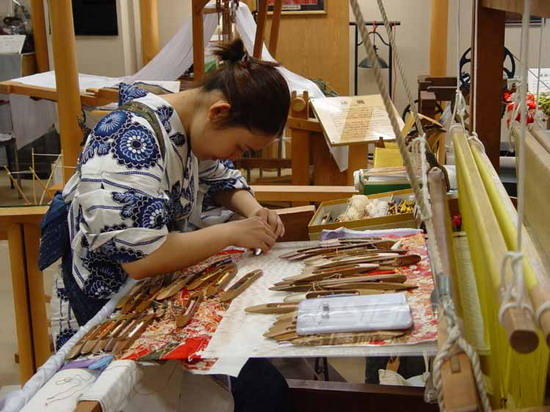Historically sewing can be traced as far back as the Iron Age, where man discovered the art of making embroidered clothing from pieces of fur.
But I’m assuming that you would be expecting countries and the regions where embroidery has had a lot of influence.
Countries like Persia, India, China, Japan, Byzantium, and medieval and Baroque Europe have heavily influenced this art form. These art forms used to be a mark of status and wealth. Traditional folk techniques were passed from generation to generation in cultures as diverse as northern Vietnam, Mexico, and eastern Europe etc.
India - Phulkari embroidery

The splendid craftsmanship of the 16th century Phulkari Embroidery is the national essence of the exquisite handicrafts preserved in the traditional Indian dress culture, by the Indian people as the quintessential art. It is not only used in the manufacture of sari and wedding but also Common in scarves, scarves, handkerchiefs and so on. Phulkari embroidery is also known as a flower-like craft, which is made by artificially small clothes, and because of the complexity of the manufacturing process, almost lost. But now the traditional handicrafts are Turned into a lot of creative inspiration for the source, Bollywood also borrowed Phulkari embroidery this art form, the film "Jab We Met" with colorful Phulkari embroidery and gold design Stunning costumes is from the well-known Bollywood designer Manish Malhotra hand, the And modern with extraordinary effect.

Russia - vologda lace

A traditional hand-crafted lace craft produced in the area of Vologda, made by hand-made by local and surrounding women on a specially crafted wooden shaft. This handcraft first appeared in the early 19th century, in the through-hole spun yarn embroidered on the smooth, coherent pattern, pattern patterns to flowers, birds, snow, etc., the process is complex, time-consuming, is the Russian lace pronoun, but also Today's fashion elements of the heavy role.

Kyoto - nishijin weaving

Gorgeous weaving techniques and can be paper, metal wire and other materials into the fabric is its biggest selling point. Although the list of its customers had several generations of Japan's emperor and family and Tokugawa family, only the market demand of the spire, inevitably face a crisis. Fortunately, at the end of 2011 by the Japanese designer Sanyuan Kang Yu invited to create a camouflage for the end of the Japanese pattern of fabric for the Paris Fashion Week series design, and let it shine for the world.

Suzhou - Tapestry

China's traditional clothing handicrafts to tapestry for the most, and "one-inch tapestry inch of gold," the highest reputation. Tapestry craft is superb, only a square towel size of the finest works, it contains thousands of progressive color, the need for senior technicians spend months to complete, and priceless. But helpless tapestry has been the captive palace of the royal treasures, once no successor; and then because of the market a single small, almost desperate. NE.TIGER total designer Zhang Zhifeng in TIGER2009 "national color Tianxiang Hua Fu ceremony" advanced custom clothing show on the show series of Chinese clothing will be used in the tapestry process, to describe the national flower peony. Each set of Seiko secret agents of the clothes is embodied in the splendor of Chinese civilization, high-level custom clothing and the perfect combination of traditional handicrafts to start a new legend tapestry.
Learn more about the Chinese embroidery, you can check this link
Post by: http://morimlee.blogspot.com/
没有评论:
发表评论